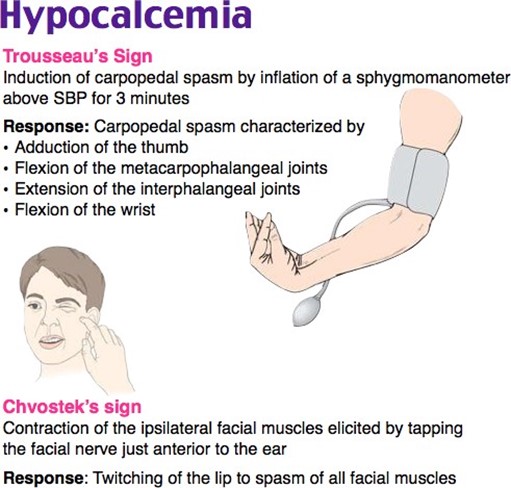The nurse is planning care for a patient with severe burns. What health problem should the nurse realize that this patient could develop?
Intracellular fluid deficit.
Interstitial fluid deficit.
Intracellular fluid overload.
Extracellular fluid deficit.
The Correct Answer is D
Extracellular fluid deficit.
Choice A rationale:
Intracellular fluid deficit is a decrease in the fluid inside the cells, which may occur in conditions such as diabetic ketoacidosis. Severe burns are more likely to cause extracellular fluid shifts rather than intracellular fluid deficits.
Choice B rationale:
Interstitial fluid deficit involves a decrease in fluid in the interstitial spaces between cells. While burns can lead to fluid shifts, the primary concern is fluid loss from the vascular space (extracellular fluid).
Choice C rationale:
Intracellular fluid overload is not a typical health problem associated with severe burns. Burn injuries are more likely to cause fluid loss and shifts out of the intracellular space.
Choice D rationale:
Severe burns can result in significant loss of plasma and extracellular fluid, leading to hypovolemia and extracellular fluid deficit. This fluid loss can lead to hypovolemic shock and other complications if not adequately managed.
Nursing Test Bank
Naxlex Comprehensive Predictor Exams
Related Questions
Correct Answer is C
Explanation
Choice A rationale:
While acute renal failure can affect phosphorus levels, potassium is the electrolyte most commonly affected in this condition. Kidneys play a crucial role in regulating potassium levels in the body, and when they fail, potassium levels can become dangerously elevated.
Choice B rationale:
Acute renal failure can lead to alterations in magnesium levels, but potassium is typically more affected. Magnesium imbalances may occur but are not the primary concern in this condition.
Choice C rationale:
As mentioned earlier, potassium imbalances are common in acute renal failure. The nurse should closely monitor the patient's potassium levels and be prepared to intervene if they become too high or too low.
Choice D rationale:
Calcium levels may also be affected in acute renal failure, but potassium remains the most critical electrolyte to monitor in this condition.
Correct Answer is ["A","B","C"]
Explanation
Choice A rationale:

The nurse considered contraction of facial muscles as a finding of hypocalcemia because it is associated with Chvostek's sign, which indicates neuromuscular irritability due to low calcium levels.
Choice B rationale:
Complaints of fingers tingling are indicative of hypocalcemia since tingling sensations (paresthesias) in the extremities can result from decreased calcium levels affecting nerve function.
Choice C rationale:
Carpal spasm with blood pressure measurement is known as Trousseau's sign and is associated with hypocalcemia. When the blood pressure cuff is inflated above systolic pressure, it can cause tetany in the hand if the calcium levels are low.
Choice D rationale:
Asking when foot numbness would go away does not directly relate to hypocalcemia or its symptoms. It is not a finding used to come to the conclusion of hypocalcemia in this scenario.
Choice E rationale:
The heart rate being 88 and regular does not directly indicate hypocalcemia. While hypocalcemia can lead to cardiac arrhythmias, a heart rate of 88 and regular is within the normal range and not a specific finding for hypocalcemia.
Whether you are a student looking to ace your exams or a practicing nurse seeking to enhance your expertise , our nursing education contents will empower you with the confidence and competence to make a difference in the lives of patients and become a respected leader in the healthcare field.
Visit Naxlex, invest in your future and unlock endless possibilities with our unparalleled nursing education contents today
Report Wrong Answer on the Current Question
Do you disagree with the answer? If yes, what is your expected answer? Explain.
Kindly be descriptive with the issue you are facing.
